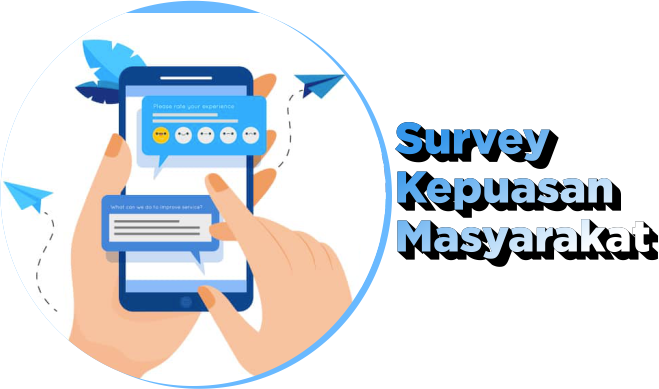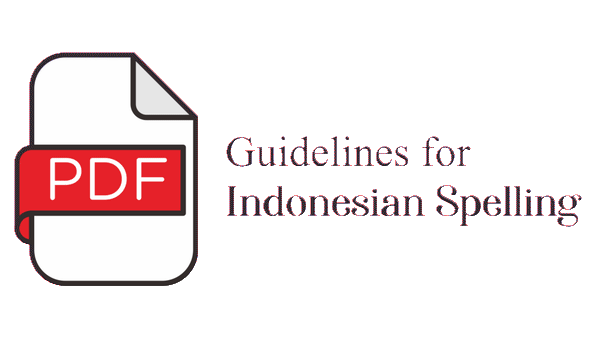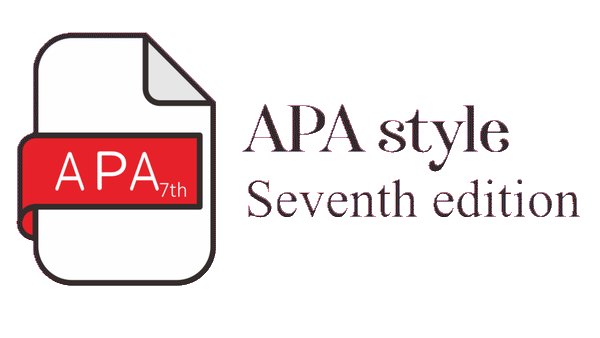RANTAI PASOK DAN LOGISTIK UDANG VANAME DI DAERAH PRODUKSI DI INDONESIA
Abstract
Rantai pasok udang vanamei di daerah produksi di Indonesia tidak selalu sama dan dipengaruhi oleh ketersediaan fasilitas pembenihan sampai dengan unit pengolahan ikan (UPI). Konsekuensinya, jenis dan jumlah biaya logistik bervariasi antara daerah satu dengan yang lain. Riset ini bertujuan untuk; a) mengidentifikasi rantai pasok udang vanamei di daerah produksi, b) menganalisis permasalahan dalam rantai pasok udang vanamei, dan c) merumuskan sistem logistik udang vanamei. Riset dilakukan selama tahun 2019 di beberapa provinsi yang memproduksi udang vanamei yaitu Jawa Timur, Jawa Barat, Bali, Nusa Tenggara Barat, dan Sulawesi Selatan. Riset ini menggunakan data primer dan data sekunder. Data primer diperoleh melalui wawancara dengan menggunakan topik data kepada 12 responden pembenihan, 4 responden UPI, 40 responden pembudidaya udang vanamei, dan 10 pedagang/pengumpul. Data sekunder diperoleh dari laporan hasil riset, data statistik, dan publikasi ilmiah lainnya. Data dianalisis secara deskriptif untuk menggambarkan rantai pasok, pola logistik, dan permasalahan yang terjadi dalam rantai pasok. Hasil analisis menggambarkan bahwa rantai pasok udang vanamei di Indonesia bisa digolongkan menjadi 3 bagian, yaitu pasokan (bahan baku dan produksi), distribusi (pedagang besar, pedagang kecil, dan pengecer), dan konsumen (pasar lokal, hotel/ restoran/catering -HOREKA- dan UPI). Permasalahan rantai pasok udang vanamei dari produsen benih sampai ke konsumen akhir telah menyebabkan produksi tidak efisien dan berimplikasi pada peningkatan biaya. Secara faktual, ada disparitas stok benih antar daerah dan kebutuhan pemenuhan stok udang di beberapa cold storage. Logistik udang vanamei menggunakan hampir semua jenis moda transportasi yaitu transportasi udara (pesawat terbang), transportasi darat (sepeda motor, mobil bak terbuka, truk biasa, truk kontainer) dan transportasi laut (kapal antar pulau dan antar negara). Sistem logistik udang belum efisien mengingat pengadaan induk udang vanamei masih diimpor dari negara lain oleh beberapa perusahaan pembenihan, dan benih ini harus menyuplai seluruh wilayah Indonesia.
Title: Supply Chain and Logistic of Vannamei Shrimp In Production Areas of Indonesia
The supply chain of vannamei shrimp in production areas of Indonesia is different in each area. It depends on the availability of hatchery facilities and the fish processing unit (UPI). Consequently, the types and logistic costs vary among regions. This research aims to: a) identify the supply chain of vannamei shrimp in the production area, b) formulate a general pattern of the logistic system of vannamei shrimp, and c) analyze the problems in the supply chain of vannamei shrimp. This research was conducted in 2019 in East Java, West Java, Bali, West Nusa Tenggara, and South Sulawesi where those provinces produce vannamei shrimp. This research employs primary and secondary data. Primary data were collected through interviews with five hatchery respondents, four UPI respondents, 40 vannamei shrimp farmers, and seven collectors/traders. Secondary data were obtained from research reports, statistical data, and other scientific publications. Data were analyzed descriptively to describe the supply chain, logistic patterns, and problems that occur in the supply chain. The results illustrate that vannamei supply chain in Indonesia can be classified into three parts: raw materials and production, distribution (wholesalers, small traders, and retailers) and consumers (local markets, hotel/restaurant/catering, and processing plants). The problem of vannamei supply chain from hatcheries to the final consumers has resulted in inefficient production and has been implicated in increased costs. Eventually, there are disparities in shrimp juvenile stocks between regions and the need to fulfill shrimp stocks in several cold storages Logistic system of vannamei shrimp utilizes almost all types of transportation modes: air transport (cargo planes), land transportation (motorbikes, trucks, cargo trucks) and water transportation (inter-island and inter-country cargo ships). The logistics system of vannamei was inefficient considering the procurement of vannamei shrimp broodstocks have always been imported from other countries by several hatchery companies, and shrimp juveniles produced need to be distributed to all-around Indonesia.
Keywords
Full Text:
PDFReferences
Al-Busaidi M.A., Jukes D.J. & S. Bose. (2016). Seafood safety and quality: An analysis of the supply chain in the Sultanate of Oman.
Food Control (59);651-662. Doi: 10.1016/j.foodcont.2015.06.023.
Apriani, H., C.I. Erliana & M. Zakaria (2019). Analisis Supply Chain Management (Scm) Udang VanameiDi Desa Teupin Pukat Kabupaten Aceh Timur. SNTI 2019, Lhokseumawe 14-15 Oktober 2019 ISSN : 2338 7122.
Batker, D. K. & Genciano, G. J. (2003). Anti-Economics: The Realities and Fallacies of Shrimp Aquaculture. In: The Blues of a Revolution: The Damaging Impacts of Shrimp Farming. Barnhizer, D. and De la Torre, I. Eds.
Brown, W. J. (2003). Agribusiness Cases in Supply Chain anagement. Paper. IFMA Congress. Champion, S.C. dan A.P. Fearne (2001). Supply Chain Management: A First Principles Consideration of Its Application to Wool Marketing. Jurnal. Wool Technology of Sheep Breeding Vol. 49 (3). Hal. 222 – 236.
Deswati, R. H., L. Rosyidah, & T. Apriliani (2020). Pengaruh anajemen Rantai Pasok Terhadap Performa Usaha Budi Daya Udang VanameiDi
Provinsi Bali Dan Jawa Timur. Buletin Ilmiah Marina Sosial Ekonomi Kelautan Dan Perikanan, p-ISSN: 2502-0803 e-ISSN: 2541-2930
Elizabeth, R., (2019). Pengembangan Agribisnis Dan Pengolahan Mendukung Pensejahteraan Petani Cabe Merah. Jurnal Pemikiran Masyarakat Ilmiah Berwawasan Agribisnis. Juli 2019. 5(2): 413-435
Ha, T.T.T., Bush, S.R. & van Dijk, H. (2013). The
cluster panacea? Questioning the role of
cooperative shrimp aquaculture in Vietnam.
Aquaculture, 388-391 (1). 89-98. Doi: 10.1016/j.
aquaculture.2013.01.011
Hadie, W., & Hadie, L. E. (2017). Analisis Sistem Budidaya
Untuk Mendukung Kebijakan Keberlanjutan
Produksi Udang. Jurnal Kebijakan Perikanan
Indonesia, 9(1), 51–60
Holmström, J. & Partanen, J. (2014). Digital manufacturing-driven transformations of service supply
chains for complex products. Supply Chain
Management: An International Journal, 19(4),
-430.
Isamu, I., Salam, I., & Yunus, L. (2018). Analisis
Kelayakan Usaha Budidaya Udang VanameiPola
Tradisional Plus di Kecamatan Samaturu Kabupaten Kolaka. Jurnal Sosio Agribisnis (JSA), 3(1), 41–48. http://ojs.uho.ac.id/index.php/JSA/article/view/7400/5407
Kanji, N. & Barrientos, S. (2002). Trade Liberalization, Poverty and Livelihoods: Understanding
the Linkages. A Review for the Africa Policy
and Economics Department. Department for
International Development, UK. IDSWorking
Paper 159. Institute of Development Studies.
Lambert, D., Cooper, M. & Pagh, J. (1998). Supply
chain management: implementation issues and
research opportunities. The International Journal
of Logistics Management, 9(2), 1–19.
Lee, T.N., Bregt, A.K., van Halsema, G.E., Hellegers,
P.J.G.J. & Nguyen, L.D. (2018). Interplay between
land-use dynamics and changes in hydrological
regime in the Vietnamese Mekong Delta. Land
Use Policy (73) 269-280.
Liu, P., Samuel H.H., Abriham M., Heng Z., & Liang H.
(2013). “The Impact of Additive Manufacturing in
the Aircraft Spare Parts Supply Chain: Supply
Chain Operation Reference (SCOR) Model
Based Analysis”. Production Planning dan
Control: The Management of Operations, DOI:
1080/09537287.2013.808835.
Nazir, M. (1988). Metode Penelitian. Ghalia Indonesia.
Jakarta.
Govindan, K., Soleimani, H., & Kannan, D. (2015).
Reverse logistics and closed-loop supply chain:
A comprehensive review to explore the future.
European Journal of Operational Research,
(3), 603–626. https://doi.org/10.1016/j.
ejor.2014.07.012
Masi, D., Day, S., & Godsell, J. (2017). Supply chain configurations in the circular economy: A systematic
literature review. Sustainability (Switzerland),
(9). https://doi.org/10.3390/su9091602
Miller, R. (2018). “Walmart is betting on the blockchain
to improve food safety”, Tech Crunch, Sept
, 2018: https://techcrunch.com/2018/09/24/
walmart-is-betting-on-the-blockchain-to-improvefood-safety/.
Pattola, E. V., Ola, L. O. L, & Piliana, W. O. (2019).
Analisis Rantai Pemasaran Udang Vanamei(Litopenaeus vannamei) Beku (Studi Kasus PT.
Yanagi Histalaraya PPS Kendari). Jurnal Sosial
Ekonomi Perikanan FPIK UHO, 4(2), 161–169.
http://ojs.uho.ac.id/index.php/JSEP/article/
view/8402/6158.
Ramirez, M., Clarke, I. & Klerkx, L. (2018). Analysing
intermediary organizations and their influence
on upgrading in emerging agricultural clusters.
Environ. Plan. A: Econ. Space 50, 1314-1335.
Song J.M., Sung, J. & Part T. (2019). Aplication
Blockchain to Improve Supply Chain Traceability.
th International Conference on Information
Technology and Quantitative Management (ITQM
. Procedia Computer Science 162, 119-122.
Tajerin, Muhadjir & Deswati, R.H. (2015). Model
Pengembangan Sistem Logistik Ikan Nasional
Terintegrasi Mp3ei Dan Sistem Transportasi
Melalui Pendekatan Pengadaan Stok Ikan.
Balai Besar Riset Sosial Ekonomi Kelautan
dan Perikanan, Badan Riset dan Sumberdayya
Manusia Kelautan dan Perikanan, Jakarta.
Van Hoek, R., (1998). Measuring the unmeasurable
measuring performance in the supply chain.
Supply Chain Management: An International
Journal 3(4), 187–192.
Yusuf, R., Rosyidah, L. Zamroni, A. & Apriliani, T.
(2020). Rantai Pasok Dan Sistem Logistik
Udang VanameiDi Kabupaten Pinrang, Provinsi
Sulawesi Selatan. Buletin Ilmiah Marina Sosial
Ekonomi Kelautan Dan Perikanan, 6(1) p-ISSN:
-0803 e-ISSN: 2541-2930
Zamroni, A., R. Yusuf, T. Apriliani, Asnawi, R.H. Deswanti,
B.V. Indah & L. Rosyidah (2019). Riset Model
Penerapan Sistem Logistik Perikanan Budi Daya
serta Penggunaan DSS untuk Perikanan Budi
Daya Berkelanjutan. Laporan Teknis. BBRSEKP.
Jakarta
DOI: http://dx.doi.org/10.15578/jsekp.v16i2.9495
Indexed by:
-------------------------------------------------------------------------------------
Published by
Research Center for Marine and Fisheries Socio-Economic
in collaboration with
Indonesian Marine and Fisheries Socio-Economics Research Network

This work is licensed under a Creative Commons Attribution-NonCommercial-ShareAlike 4.0 International License.



















